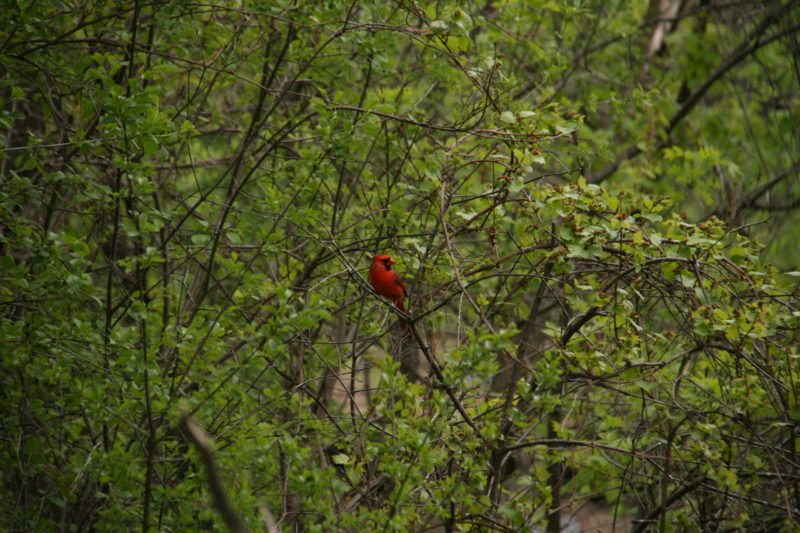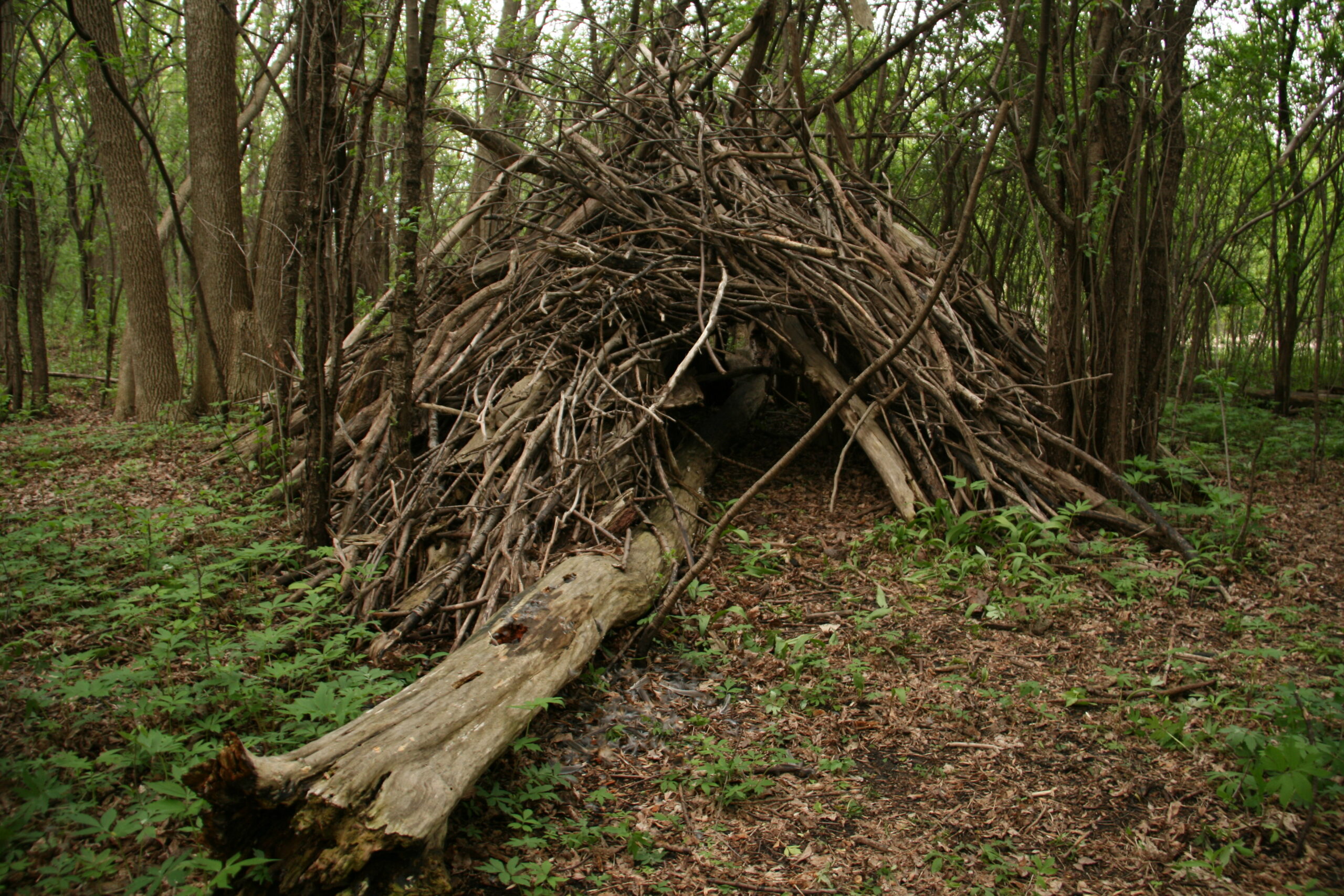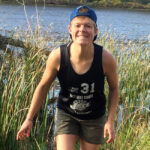“Something happened as the radius of my life narrowed from thousands of miles to just a few. It was as if the loss of my ability to explore places far and wide allowed me to see, to fully see, my immediate world for the first time. I began to see the trails right at my feet, inviting me into their hushed woods, the maple and elm and oak trees unfurling around me, and great blue herons circling high above.“
(This was slated to be posted in March; see note at bottom for additional context.)
Spring Break, 2020
In many cultures, spring is a time of renewal — a transitional experience for humans and our environment alike.
In every season, my privileged world bends towards opportunities to be outside — ideally on my skis or mountain bike. Spring, in particular, is the one season of infinite recreational possibilities — the joy borne from powder fields one day, dusty trails the next.
In a venn diagram relating summer to winter is the narrow overlap of spring: the shoulder season, the mud season, surprise blizzards one day, and snow melting away under a blaze of sun the next. Both seasons bear gifts in this shared space. From winter: snow that melts and refreezes into fields of skiable dip-n-dots — ice in the morning, slush by afternoon. And from summer: sunshine and warm breezes that coerce singletrack to emerge from a long dark slumber, peeling away layered blankets of snow.
Icy rivers and lakes concede to a sun that climbs a little higher each day. Frozen sheets dissolve into frigid waters, and streams stream again, to the place they had been going — as if winter was simply a pressing of pause.
Every spring for the past six years, I have gone to the Utah desert. It has begun to feel like a way to mark the passing of time, a way to welcome the shift from shorter days to longer ones.
This year was to be no different. My partner and I would trade bitter cold / empty deciduous trees / continuous grey sky for red dusty soil / sunburns / twisted juniper trees.
Every spring there has been a pilgrimage to the desert, that is, of course, until this spring.
It is, and will continue to be a complicated sadness — one in which the unraveling of things in our own lives are shadowed by the mounting deaths and living hell that people are experiencing elsewhere, as well as the economic repercussions as millions of people lose their jobs.
***
When I think back on it now, I recognize the trajectory — the fluctuation of feelings and thoughts, the nervous stomach aches. I was going through the classic stages of grief, coping with the loss of my springtime ritual, resigning myself to more cautious escapades within a few miles of my front door. Those thoughts went as follows:
Denial: Covid will be just like SARS or the swine flu or those other ones. They didn’t affect me!
Anger/Anxiety: Mrehhhh I’m getting a little nervous about this whole pandemic thing, and also slightly annoyed that it is intruding on my beloved spring break plans. The nerve!
Bargaining: Maybe we can drive! 23 hours each way! Four of our nine days just driving! Totally reasonable. OR, another plan — we’ll just go to Arkansas and bike! I’ve heard great things about the trails there. (Some reflection time) But also, now that I think about it more, we don’t necessarily want to be those assholes doing high risk activities 600 miles away from our home communities. Out-of-network copays and being one of those people taking a hospital bed during a pandemic because they crashed their bike trying to get rad? Hard pass.
Depression: I went for a walk alongside the Mississippi River, a cold rain falling under a flat grey sky. Everything was quiet aside from fracturing raindrops as they met the ground and reorganized into tiny pools and tilted streams. I stopped and leaned against a railing, feeling the cold of the metal transfer to my ribs, right through my raincoat. In front of me the river slipped by, the flat grey surface oblivious to all the feelings within the city it so calmly sliced through. I looked down and saw an elegant Tundra swan — a white body so bright that it seemed misplaced in my dark, gloomy surroundings. He was dead. His body was anchored to the sandy shore. His long neck and head swayed gently in the shallow water, resisting a relentless pull towards somewhere else, anywhere else.
That moment felt as though it summed up March.
It is, and will continue to be a complicated sadness — one in which the unraveling of things in our own lives are shadowed by the mounting deaths and living hell that people are experiencing elsewhere, as well as the economic repercussions as millions of people lose their jobs. Missing out on a spring break trip to galavant in the arid corner of the American southwest is disappointing, but trivial given that the world we all know is spinning into chaos.
On my walk back to my car I noticed a digital sign, jutting skyward from the Guthrie theater at the edge of downtown, red words scrolling over a black screen: Promise this world your love.
And Finally, Acceptance: The desert trip of 2020 was canceled, airfare vouchers in the inbox, Airbnb payments refunded. Friends’ weddings in May and June, postponed. The Nordic World Cup in our backyard regional park, canceled. Those of us fortunate enough to be able to work remotely began a journey of video call madness — echoes, delays, insufficient use of the mute button, “meetings” with our coworkers that left us feeling hollow and for me, a growing case of imposter syndrome. Everything was canceled and everything changed, and we all had feelings about it.
But time is still moving forward, indifferent to the loss of spring break plans and summer vacations and weddings and frisbee season and organized races. What will I do with this time? In the face of chaos will I retreat, turn inward — the natural reaction to fear? Or will I lean into the chaos and be able to conjure something of greater benefit? Can I commit to promising this world my love, however different our world may end up being?
As the life I knew moved through stages of grief, from before covid arrived, to the denial of its arrival, and ultimately acceptance, my geographic radius became tighter and tighter, the zig zags of daily movement shrinking. In February, I flew home to Colorado to ski with friends. Then I flew to New York for my Grandma’s funeral. I started commuting to a new job covering the width of the Twin Cities everyday — west Minneapolis to East of St. Paul and back again. Weekends were filled with brief zigs into other communities — Wisconsin for a ski race, the suburbs for their regional parks, and many zags across the cities — brunch and coffee dates, housewarming parties and birthday celebrations.
In April, I did nothing of such absurd nation-trotting. Bi-monthly trips for groceries (but never TP, always out of stock, THANKS HOARDERS) became the incredibly exciting outings of the month — standing in line, waiting to be allowed in so that proper distancing inside could be maintained. Walks, runs, bikes, all started and ended from our apartment door. My car didn’t move for weeks. I forgot about gas stations. As these altered pieces of life started to fall into place, a new reality of social distancing and staying-at-home started. to. s e t t l e.
**
Something happened as the radius of my life narrowed from thousands of miles to just a few. It was as if the loss of my ability to explore places far and wide allowed me to see, to fully see, my immediate world for the first time. I began to see the trails right at my feet, inviting me into their hushed woods, the maple and elm and oak trees unfurling around me, and great blue herons circling high above.
Something happened as the radius of my life narrowed from thousands of miles to just a few. It was as if the loss of my ability to explore places far and wide allowed me to see, to fully see, my immediate world for the first time. I began to see the trails right at my feet, inviting me into their hushed woods, the maple and elm and oak trees unfurling around me, and great blue herons circling high above.
Last spring, and the spring before that, I was training for a June marathon. Before each run, I queued up a playlist, and started a running app before jamming it into my sports bra, already worrying about the few precious seconds lost by the delay. My headphones delivered a constant stream of music, interrupted by a monotonous female voice informing me of each mile split, my overall pace, and cumulative distance. This spring, there is no marathon to train for, no mileage calendar to follow, no consequence in pace for mistimed traffic lights or the tying of shoes. I didn’t need anyone telling me how fast I ran each mile, because I didn’t have anything I was aiming for. So I started leaving my phone at home. Without pace updates, without music, without the chime of an incoming text, running changed.
The first run I went on without my phone I took a usual route which after a brief stint on the road and along train tracks, delivers me onto a narrow singletrack that parallels Basset Creek. Without my latest carefully curated spotify playlist streaming into my ears, I could hear the world around me — moving water, the serenade of songbirds, the tap-tap-taps of horsetail reeds swaying into each other, the soft clap of each shoe impressing every ounce of my body into the soil between each floating stride. Eventually the narrow path empties you onto a paved walking path which I followed onto a boardwalk spanning Wirth Lake, eastern shore to western shore. Halfway through, something in my periphery caught my eye. It was moving in the same direction as I, right at the surface of the water not more than 20 feet to my right, weaving around thick clumps of soft green algae.

Parting the water, a face that reminded me of a beaver and a pika at the same time, commanding black eyes calculating the path of least resistance, deep brown fur slicked back in clumps along her body until the point it slipped into water below, a small wake leaving traces of upside down V’s, briefly reorganizing mats of duckweed.
I stopped running and started walking so that our paces matched, moving parallel to one another. A few times the algae became excessively thick and she climbed out, a sleek tail akin to a rat’s, though much longer, trailing in the grass behind her.
A muskrat! Two runners passed by, and I excitedly whispered “THERE’S A MUSKRAT!!” and pointed towards her. They briefly slowed to look, made a noise of confirmation and kept going, clearly not as excited about a swimming rodent as I was.
They left, but we were still moving in tandem: she, propelling through the surface of the dark-blue-almost-black lake water, me walking in silence to match her progress. I imagine that our parallel dance registered for her, because animals are far more observant than we are. And it registered for me, of course, but how to describe our brief connection I cannot say. The one thing for certain is the way I used to run would never afford such space for observation and curiosity. It is unlikely that a muskrat would be noticed with my Olympian-level focus on efficient forward movement or the high volume of Sylvan Esso streaming into my little eardrums. Even if I had, there would be no room to saunter along at a muskrat’s pace, for fear of decimating a mile split and ruining the overall pace.
Free of such constraints, I was allowing myself the space to notice the wonders coming into focus around me. On my next run, I ran past a row of lilac bushes in full bloom. I stopped and stuck my head fully into the shade of the leaves, taking deep inhales of fragrant air — pace be damned. I was stopping and smelling the roses lilacs, something I’ll be doing on runs from now on, thank you very much.
And another thing — have you ever seen a pinecone grow? Do you know what it looks like before it becomes all woody and pokey-like? Because I’ve been alive for 31 years, which means I’ve lived alongside 31 cycles of pinecones, but this was the very first year I stopped to look hard enough at the emerging pine needles of the white pines and the tamaracks near our apartment. When I looked closely, I saw the most delicate, tiny pinecone, no bigger than my thumbnail. And instead of woody brown edges, there were stacks of tiny green flexible scales protruding from a central stem. Who knew! Not me! I didn’t know!

And do you really know where you live? Every culvert and alley and ditch? The best trees to climb and the streams that collect the rain when it falls or the snow when it melts? Do you know where the birds and squirrels tuck themselves in at night? Because I’ve lived in the same apartment for three years, but in the last two months I’ve found trails in our neighborhood I never knew were there. A strip of woods between Basset creek and the train tracks that hosts a treehouse, a freshly constructed ladder leaning against the sturdy oak. On another trail, a hidden patch of white pines, the needles from past seasons hushing footsteps, quieting them to mere whispers. An unmarked fork I took on my bike the other day eventually yielded a dirt jump line, tucked into a thin strip of woods between neighborhoods, shovels on the ground, the stuff of after-school dreams. On that same bike ride, we wondered out loud if this pond has a name / what trail we’re on / where even are we?
There are so many peaks and canyons and rivers and trails out there. It has somehow gotten drilled into our heads that any worthy adventure means leaving home. I was too busy injecting myself into the landscapes of other communities to realize I don’t fully know where I come from. The muskrat and the treehouse and the trails and the green pinecones galvanized a shift in the way I experience the world. Those moments of discovery, of realizing it had been here all along if only I cared to look, helped me see everything I give up when my world becomes a little too big, a little too rushed, a little too oblivious to the wonder unfolding right in front of me.
Nobody is sure when we will be able to return to our understanding of normal life. And in reality, it’s hard to know just how different life will be as once we come out the other side of this pandemic. This experience will mark humanity, a formative period in the collective history of our lives, something we can never fully shake.
And though a pandemic creates immense hardships, it offers opportunity as well. As we limit our movements and consumption patterns, pollution levels have dropped to their lowest in decades, wildlife has reclaimed habitat, and we’re starting to think a little more about how vulnerable we’ve allowed ourselves to be. I am realizing more than ever, the beauty and necessity of cultivating food, relationships, political power, and outdoor opportunity right in our own communities.
When this all ends, what will we do? Will we revert to normal, or, will we have been shaken awake for long enough to know that maybe normal wasn’t what we actually wanted in the first place.
Note:
Update: I wrote this blog post in the early pandemic gloom of March, 2020. Since then, so much has changed, and now, even more than before, I see the lens of privilege through which I wrote this piece.The geographic radius of our lives may have started to increase again, but another radius, one around a deeper understanding of racial justice has just emerged for many of us. I have the opportunity to lean into discomfort, to learn and unlearn, to reject my defensiveness and privilege, amplify the work of BIPOC folks, and to do all this in a way that isn’t a performative allyship, GOODJOBME, type of scene, but rather something that is sustained long after black squares and peaceful protests.
The murder of George Floyd is reminding us of a long history of police brutality and injustices against POCs.
COVID-19 is reminding us of the racial, economic, and gender disparities that have long existed. The pandemic is also intensifying those disparities as POCs lose jobs and housing as well as access to public education at a significantly higher rate than white folks.
Neither of these defining episodes of 2020 have exposed anything new. These injustices have always been there, but many of us (myself included) have looked away when things feel too hard or uncomfortable.
And though none of this is new, the way we move forward can be, and hopefully this time, it will be. It has to be.

Shannon Conk
Ambassador Shannon Conk will spend August 21 biking, paddling, running, hiking, and swimming through the urban landscape of Minneapolis, MN. Her metropolitan adventure will highlight the importance, accessibility, and low-barrier entry of wild spaces and outdoor recreation within a major city. See her ambassador page.
